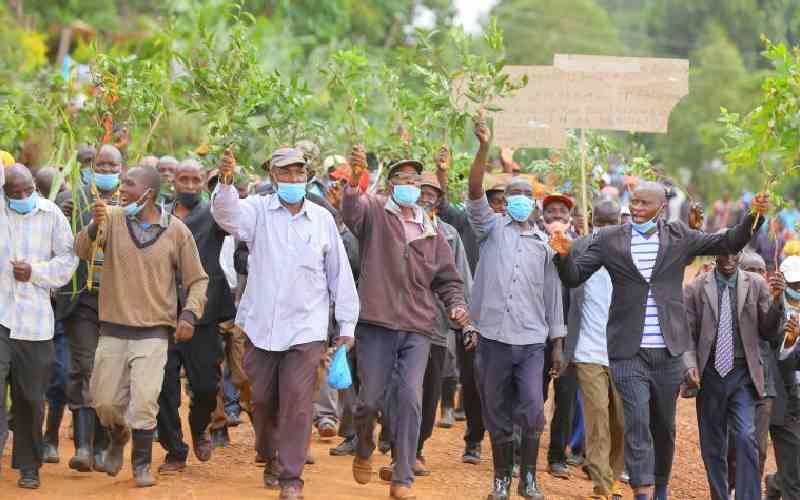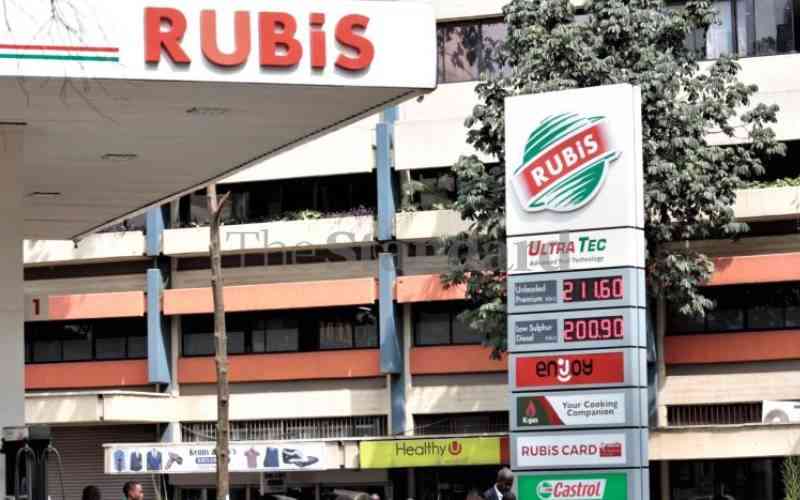By Cliff Otega
Kenya: The Mining cabinet secretary Najib Balala was the chief guest at the ceremony marking Base Titanium Limited’s first commercial shipment in Likoni earlier this month. This is a major milestone for the country, but unfortunately news articles reporting the success story were clouded by the continued issues surrounding royalty rates.
The industry is bigger than just royalties and ordinary Kenyans need to start thinking beyond this. Mining is big business globally. The top 40 largest listed mining companies by market capitalisation around the globe reported revenues of $731 billion in 2012 (approximately 18 times Kenya’s 2012 GDP). Most of this revenue is spent on the supply chain (goods and services) and social programmes. So how does the average Kenyan get involved?
Secure jobs
Of course, the most obvious avenue is jobs. Modern mining is more capital than labour intensive so while the lucky few will get good quality, long term jobs, it is unlikely that mining will absorb a huge number of our workforce directly, particularly our youth. However, to secure the jobs that will be created, we need to focus on education.
The industry requires well trained engineers, geologists, health and safety specialists, heavy equipment drivers, mine accountants and so on. This is the time for our youth to consider these careers so that they are well positioned when mining companies come calling. Our institutions need to be at the forefront of this training.
For example, the Taita Taveta University College has taken steps to meet this demand with courses such as its Mining and Mineral Processing Engineering Programme but we need greater access to this education across the country.
Biggest impact
The greatest impact of the industry will be in the economic development stimulated by capital and operational spending by mining companies. These companies will require billions of shillings worth of supplies in the years to come. Food, chemicals, medical services, protective equipment, transport, accommodation, construction and maintenance services will all be required to keep plants operational. Kenyans are renowned for their entrepreneurial spirit.
Rather than clamour only for jobs and distribution of royalties, why not position ourselves to receive the largest piece of the pie, which is the expenditure on goods and services?
It is a sad truth that in many African countries with substantial mining industries, local populations are woefully underrepresented in the mining services industry yet this sub-sector is a far bigger employer than mining companies themselves.
Now is the time to analyse the needs of exploration and production companies and create local capacity to deliver. South Africa has developed a mining services industry that is second to none on the continent and is a good model to emulate.
Third, who says that home grown Kenyan companies and individuals cannot become large scale mining companies themselves? Rather than wait to enforce indigenous participation in foreign owned corporations (such as recent measures in Zimbabwe) with predictably disastrous results, we can foster tomorrow’s Kenyan miners today.
To achieve this, we need to shed the get rich quick mentality. Reaping rewards from mining takes time – up to 15 years. It is also capital intensive. Our banks and other financial institutions need to come to the party by developing products to support the industry.
All risks, including the dreaded exploration risk can be mitigated so that is not an excuse not to participate. Our fiscal policies can also assist this indigenous participation. For example, individual Canadian investors can obtain a tax credit based on their investment in shares of mineral exploration companies.
Non-productive
No wonder Canada has a world class mining industry! Perhaps some of the billions spent on real estate by pension funds and individuals, particularly non-productive land holdings, could be diverted to mining through co-operatives or stock exchange listings? Considering that mining’s contribution to GDP is set to double with just one additional mine this year, the sector is obviously ripe for investment. Finally, a word on royalties – the current buzzword. This is basically an industry knowledge challenge and I will use gold mining as an example. Gold production and sales are measured in ounces. During the 1st half of 2013, Africa Barrick Gold (ABG), which mainly operates in Tanzania, publicly reported an average gold selling price of $1,366 per ounce.
A cursory glance at the business pages would indicate that this price is worrying many gold producers. Why would this be so? This is because there is a substantial cost to producing that ounce.
The headline cost (or the “cash cost”) for ABG in the same period was $879, consisting of direct costs such as equipment, fuel, salaries and logistics. However, there is a more comprehensive measure referred to as the “all in sustaining cost” which was $1,416 during that period indicating that the company is actually losing $50 on every ounce!
This cost includes “cash costs” plus corporate administration costs, taxes, royalties and capital reinvestment. This indicates that any cost increases would threaten the company’s viability, including jobs, future investment and local expenditure. The economics of mining are central to the royalty debate.
Our mining industry’s potential could be transformational, but future generations will only thank us if we build the appropriate foundation for that transformation now.
The writer is a Nairobi-based mining consultant.
 The Standard Group Plc is a multi-media organization with investments in media
platforms spanning newspaper print operations, television, radio broadcasting,
digital and online services. The Standard Group is recognized as a leading
multi-media house in Kenya with a key influence in matters of national and
international interest.
The Standard Group Plc is a multi-media organization with investments in media
platforms spanning newspaper print operations, television, radio broadcasting,
digital and online services. The Standard Group is recognized as a leading
multi-media house in Kenya with a key influence in matters of national and
international interest.
 The Standard Group Plc is a multi-media organization with investments in media
platforms spanning newspaper print operations, television, radio broadcasting,
digital and online services. The Standard Group is recognized as a leading
multi-media house in Kenya with a key influence in matters of national and
international interest.
The Standard Group Plc is a multi-media organization with investments in media
platforms spanning newspaper print operations, television, radio broadcasting,
digital and online services. The Standard Group is recognized as a leading
multi-media house in Kenya with a key influence in matters of national and
international interest.









